Sets
Definition
A set is a collection of explicitly-defined distinct elements.
Elements of a Set
If 2, 4, 6, 8 are elements of A, we can then write
or it can be written using the set-builder notation
read as "A is the set of all x such that x is an even digit".
The phrase “2 is an element of A” is equivalent to the statement “2 belongs to A”. In symbol, we write
It follows that
to indicate that “5 is not an element of A”.
Universal Set, U
Universal set consists all elements under consideration.
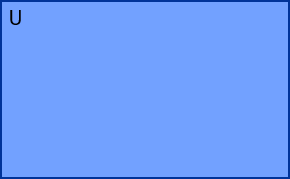
Back to top
Null Set
An empty set, or a set with no element, is called a null set and is denoted by $\varnothing$.
Back to top
Subset
If all elements of set A belongs to set B, then A is a subset of B. In symbol we write
to respectively indicate that "A is contained in B" or "B contains A".
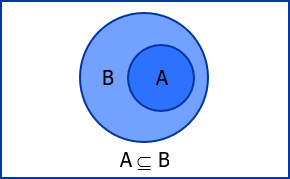
The negation of this is
Example
Note: All sets under consideration belongs to a particular universal set.
Complement of a Set
All set elements which belongs to U but do not belong to A is called the complement of set A and is denoted by Ac.

Back to top
Disjoint Sets
Two sets are said to be disjoint if the sets contains no common element.
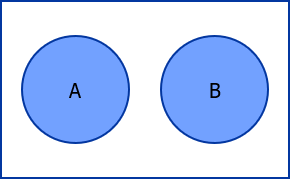
Back to top
Union
The union of two sets is the set of all elements which belongs to either or both sets.
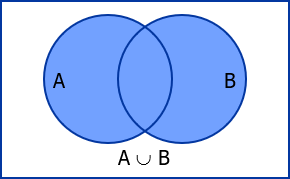
The union of A and B is denoted by A ⋃ B.
Example
Back to top
Intersection
The intersection of two sets is the set of all elements which belongs to both sets.
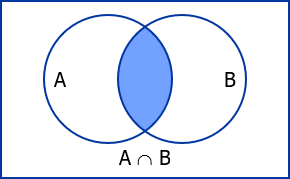
The intersection of A and B is denoted by A ⋂ B.
Example
Note: If A and B are disjoint sets, then A ⋂ B = $\varnothing$.
Difference
The difference of two sets, also called relative complement, is the set of elements which belongs to one set but do not belong to the other set.

The difference of A and B is denoted by A\B.
Example
Back to top
Symmetric Difference
The symmetric difference of two sets consists of those elements which belongs to either of the two sets but excludes the elements that belongs to both of the two.
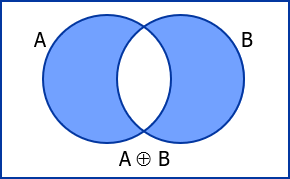
The symmetric difference of A and B is denoted by A ⊕ B.
Example
Note: If A and B are disjoint sets, then A ⊕ B = A ⋃ B.
- Log in to post comments
